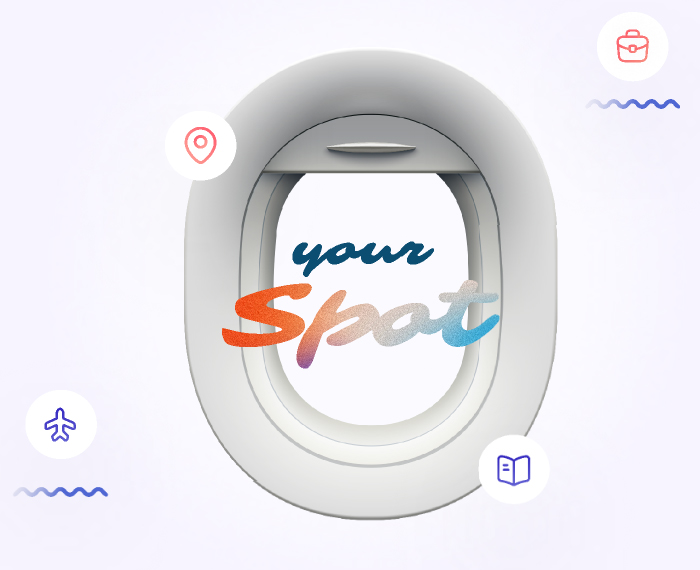


Ever wondered why Canada is a hot destination for people from all around the world? Well, it is because of its welcoming immigration policies and diverse culture! Among the various immigration pathways, the Express Entry system stands out as a beacon of efficiency and opportunity. The Express Entry system is an efficient pathway for becoming a permanent resident in Canada.
Are you curious about how aspiring residents can enhance their prospects? For those aiming to settle in Canada, demonstrating proficiency in English, assessed through exams such as IELTS, does the trick.
The Express Entry system is the primary gateway for skilled workers aspiring to immigrate to Canada. Administered by Immigration, Refugees and Citizenship Canada (IRCC), it relies on a points-based mechanism called the Comprehensive Ranking System (CRS), which considers various factors.
These include core human capital aspects like age, language proficiency, Canadian work experience, and education. Additionally, skills transferability, occupation categorization under the TEER system, and factors like job offers or provincial nominations play crucial roles. Here is a breakdown of these essential elements:
Core Human Capital Aspects
Skills Transferability
Occupation and TEER Categorization
Other Factors
For more detailed information, individuals can refer to the IRCC website.
Eligible applicants create an online profile through the Express Entry system as the initial step. This profile is the basis for their ranking in the Express Entry pool. You may provide information about skills, work experience, education, language proficiency, and other relevant details.
Eligible applicants create an online profile through the Express Entry system as the initial step. This profile is the basis for their ranking in the Express Entry pool. You may provide information about skills, work experience, education, language proficiency, and other relevant details.
Upon profile submission, aspirants receive a Comprehensive Ranking System (CRS) score. CRS assigns points based on various factors such as age, education, work experience, language proficiency, and other additional criteria. This score determines the candidate's ranking within the Express Entry pool, reflecting their potential to contribute to the Canadian economy.
Candidates enter the Express Entry Pool after receiving their CRS score. They join a pool with other applicants and await ranking based on their CRS scores. This pool serves as a database from which IRCC selects candidates for Invitation to Apply (ITA) during regular draws.
After getting selected from the Express Entry Pool based on their CRS scores, candidates with high CRS scores receive an ITA during regular draws conducted by the IRCC.
This invitation enables candidates to submit a complete application for permanent residency to IRCC.
Upon receiving an ITA, candidates submit a complete application for permanent residency to IRCC. Please note that they have a limited time to do so.
The Express Entry System integrates three primary immigration programs:
To qualify, applicants must satisfy the following criteria:
To qualify:
It is tailored for individuals with skilled work experience in Canada, such as through temporary employment or studies, who seek to transition to permanent residency.
To qualify:
The International English Language Testing System (IELTS) is a globally recognized exam that evaluates non-native speakers' English language proficiency. It is a critical component of various immigration processes, including Canada's Express Entry system, where language skills directly impact a candidate's CRS score.
IELTS offers two main types of exams:
Among the two available versions, the General Training variant is tailored to assess language skills required for everyday situations, making it particularly suitable for immigration purposes.
Scoring well in the IELTS General Training exam can notably boost your CRS score, thus improving your prospects of receiving an ITA for Canadian permanent residency.
The exam assesses proficiency in four essential language skills: listening, reading, writing, and speaking. Excelling in these modules can earn you valuable CRS points, enhance your overall score, and increase your competitiveness in the Express Entry pool.
The IELTS exam comprises four key sections, each evaluating different aspects of your language proficiency. These sections cover listening, reading, writing, and speaking skills, comprehensively assessing your ability to communicate effectively in English.
Let us delve into each section to provide insights and strategies for success in the exam:
You will have 30 minutes to complete the task in the Listening section of the IELTS exam. This section comprises 40 questions spread across four sections. The first recording features a conversation between two individuals in a routine setting, while the second presents a monologue in a typical scenario. The third recording involves a conversation among up to four people in an academic context, followed by a monologue discussing an educational topic in the fourth recording.
In this section, you will have 60 minutes to complete 40 questions. This section is divided into three parts, each presenting a different type of text. The first part features two or three short factual texts on everyday life topics, while the second part consists of two short factual texts about work-related topics. The final part comprises a long text covering a general interest topic.
In this section, you must complete two tasks within 60 minutes. The first task involves writing a letter responding to a given situation, while the second involves crafting an essay on a provided topic.
In the IELTS Speaking section, you will converse face-to-face with the examiner, lasting between 11 and 14 minutes. This section is divided into three parts. First, the examiner will inquire about you and your family. Then, you will discuss the examiner's chosen topic, followed by a deeper conversation about the same subject.
With this broader understanding of the Express Entry pathway to Canadian permanent residency, remember that the IELTS exam is your ultimate tool for success. By excelling in this assessment, you will showcase your language skills and maximize your opportunities within the Express Entry system. So, keep your goals in sight, and let mastering the IELTS exam pave the way for a bright and fulfilling future in Canada.
Please do not hesitate to contact us for any assistance regarding visa documentation or the application process. ImmiLaw Global has a dedicated team of immigration lawyers and overseas study consultants ready to assist you with your tailored needs.